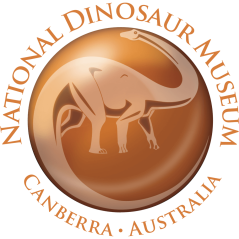Amargasaurus: The Spiky Sauropod!

Dinosaurs come in all shapes and sizes, but few were as unique as Amargasaurus! This prehistoric giant roamed South America during the Early Cretaceous Period, around 130 million years ago. While most sauropods were known for their long necks and massive size, Amargasaurus had something extra—two rows of tall spines running down its neck and back!
What Made Amargasaurus Special?
Amargasaurus was a herbivore, meaning it only ate plants. It wasn’t the biggest dinosaur around—at about 10 metres long, it was actually quite small for a sauropod. But what really made it stand out were its spines. Scientists aren’t exactly sure what these spines were used for, but they have a few theories:
Defence – The spines may have helped scare off predators.
Display – They could have been used to attract mates or communicate with other Amargasaurus.
Temperature Control – Some scientists think the spines may have helped regulate body heat.
Where Did Amargasaurus Live?
Amargasaurus fossils were found in Argentina, in a place called the La Amarga Formation. This area was once a lush environment with plenty of plants for it to eat. It likely shared its world with other dinosaurs, including Carnotaurus, a fast-moving predator with tiny arms!
How Did It Move? Unlike some of its larger relatives, Amargasaurus walked on all four legs and probably couldn’t rear up on its hind legs. Its long tail helped with balance, and its small head was perfect for munching on low-growing plants.
Why Did Amargasaurus Go Extinct?
Like many dinosaurs, Amargasaurus eventually disappeared. Scientists believe that a combination of factors contributed to its extinction. Changes in climate might have altered its habitat, making it harder to find food or suitable places to live. Shifts in vegetation could have affected the availability of plants it relied on, forcing it to compete with other herbivorous dinosaurs. Over time, new predators may have emerged, putting additional pressure on Amargasaurus and other species in its ecosystem.
Despite its disappearance, Amargasaurus left behind important clues in the fossil record. These fossils help scientists reconstruct its appearance, behavior, and environment, giving us a window into life millions of years ago. By studying its bones, paleontologists can learn about its diet, movement, and possible interactions with other dinosaurs.
Fun Facts About Amargasaurus
- Its name means “La Amarga lizard”, named after the place where it was found.
- It belonged to a group of dinosaurs called Dicraeosauridae, which had shorter necks than other sauropods.
- Some scientists think its spines may have supported a sail-like structure, similar to Spinosaurus!
If you love learning about dinosaurs and ancient reptiles check out our other Dino News blogs and don’t forget to visit us!
References:
- Facts Just for Kids: Amargasaurus Facts
- Only Dinosaurs: 10 Best Amargasaurus Facts
- Kiddle Encyclopedia: Amargasaurus for Kids
